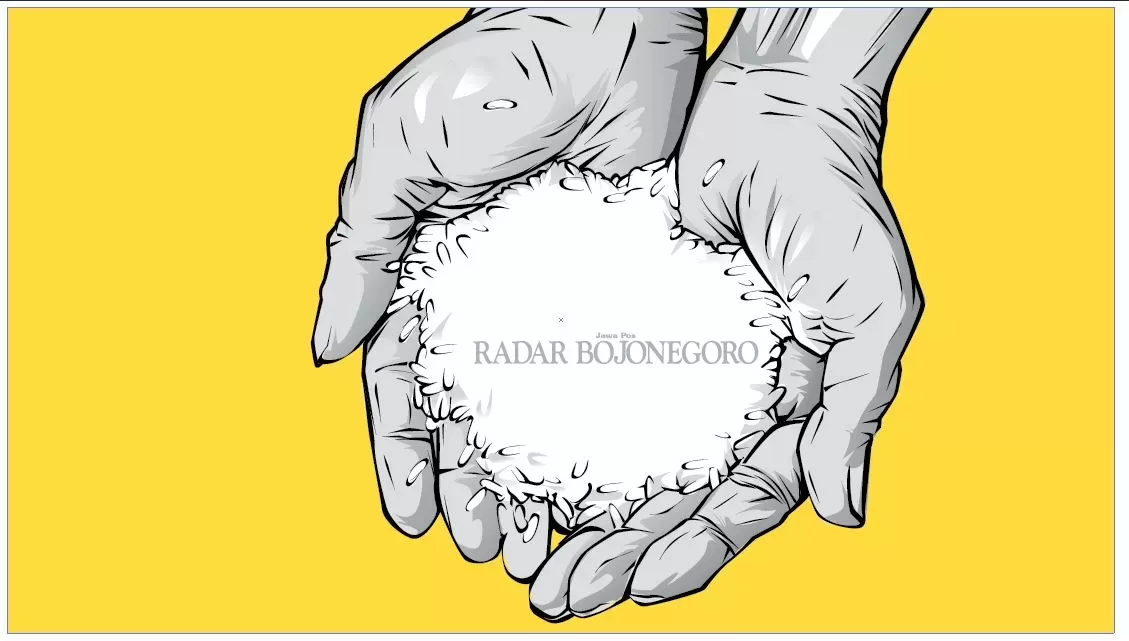 Since the end of 2023, Indonesia will again open the tap for rice imports to meet domestic needs. Rice was imported from India amounting to 1 million tons and from Thailand amounting to 2 million tons. This import is a continuation of the import contract that was previously approved by President Joko Widodo.
Since the end of 2023, Indonesia will again open the tap for rice imports to meet domestic needs. Rice was imported from India amounting to 1 million tons and from Thailand amounting to 2 million tons. This import is a continuation of the import contract that was previously approved by President Joko Widodo.
BPS data released the total volume of rice imports carried out by Indonesia during January - November 2023 of 2.53 million tons with a value of 1.45 billion US dollars. Why can a country that is known to be agricultural import? There are many reasons that influence this, starting from weather/climate factors, the increasingly limited amount of agricultural land because many owners are selling it, the technology used, and others.
Rice, as one of the staple foods of Indonesian society, is an important commodity that is included in long-term plans to achieve domestic food security. Various efforts have been made by the government, such as tightening fertilizer distribution, agricultural management training, and working on the largest project currently being developed, known as a food estate, all carried out in order to maintain food sovereignty in Indonesia.
Looking from an economic perspective, what is the contribution of the agricultural sector in terms of overall sales if domestic food supply is still imported? Indeed, the contribution of the agricultural sector to nominal GDP decreased to 13.70 percent (2020), 13.28 percent (2021), and 12.40 percent (2022). Seeing the decline in GDP, at first glance it can be assumed that rice productivity in Indonesia has not yet reached the level of sovereignty that is aspired to, let alone achieving food self-sufficiency, it seems that it will be very difficult.
What should we do considering the small reality that Indonesia is not as agricultural as it used to be? First, develop human resources who truly love the agricultural profession. PDDikti noted that there are 1,862 agricultural study programs with a total of 313,169 students.
Second, easy access to agricultural facilities. One of the important facilities provided to farmers but which always presents problems is fertilizer. Problems arise from upstream to downstream, from data collection on fertilizer demand to sales to farmers. Even the issuance of Kartani (Kartu Tani) has not provided a solution to the fertilizer problem. As an important part of increasing the productivity of food crops, the government's commitment to providing fertilizer assistance needs to be questioned again because in the last 3 years the allocation for subsidized fertilizer spending has continued to decline, namely from 34 trillion (2020), 25 trillion (2021), and has fallen further to 23 trillion ( 2022).
Third, is it still worth running a food estate? The food estate concept of providing large areas of land focused on providing food sources is still worth continuing, but note that this concept needs to be prepared carefully and sustainably. Preparing a strategy to realize the food estate concept again returns to the first point, namely how to prepare our human resources, whether they are ready to become farmers. Of course, the farmers in question are modern farmers who have developed models and the latest technology for their application in the field.
Agricultural graduates are provided with supporting facilities to practice their knowledge in agricultural processing. The crops developed are food crops and commodity crops which have high prices on the market. The program is implemented in a sustainable manner, which means that the food estate concept must be fully managed on an ongoing basis while still paying attention to its impact on the environment. Food estates as the country's food storage need to be supported to maintain the country's food sovereignty, so that the country is more independent in providing sufficient food and can minimize imports from other countries. The Global Report on Food Crises (2023) has raised the alarm for countries in the Asian region, including Afghanistan, Sri Lanka and Bangladesh, as countries experiencing a food security crisis.
Indonesia needs to prepare itself to become self-sufficient in providing domestic food and not depend on imports. In fact, the food estate program is worth supporting as Indonesia's long-term plan because apart from maintaining domestic food supplies, it can be used as a sector that can provide added value to GDP, considering that several countries are already experiencing a food crisis, so Indonesia can sell some of its harvest to other countries.
Once again, discussing the issue of agriculture with unsatisfactory results requires looking at it from various broad points of view because the steps above are not fully able to answer why Indonesia cannot be as agricultural as before. Improvements in terms of policy need to be reviewed, such as Indonesia's current rice stock reserve regulations of only 8%, which could be increased further so that they can cover if a crop failure occurs. Apart from that, it is no less important to try to change the behavior of the people, who almost 97% consume rice, switching to consuming alternative panga ingredients such as tubers, which is certainly not easy. However, there is no harm in trying, because humans do not always have to continue to depend on rice.
Author: Dicky Andriyanto - Lecturer in Accounting Study Program, Faculty of Economics and Business - Universitas Airlangga

























